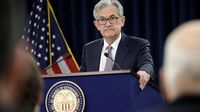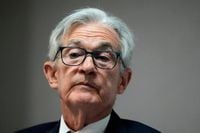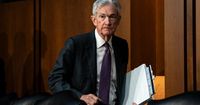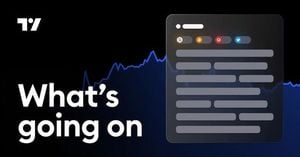Federal Reserve Chairman Jerome Powell addressed the significant economic challenges posed by President Donald Trump’s sweeping tariff policies during a speech at the Economic Club of Chicago on April 16, 2025. Powell indicated that these tariffs are larger than even the highest estimates prepared by the Federal Reserve, leading to potential higher inflation and slower economic growth.
In his remarks, Powell emphasized, "The level of tariff increases announced so far is significantly larger than anticipated, and the same is likely to be true of the economic effects which will include higher inflation and slower growth." This unprecedented shift in trade policy has left the Fed navigating uncharted waters, as it seeks to balance its dual mandate of controlling inflation while promoting maximum employment.
Powell explained that the tariffs could create a "challenging scenario in which our dual-mandate goals are in tension." He acknowledged the strong likelihood that the economy will drift away from these goals for the remainder of the year, complicating the Fed's decision-making process. "If that were to occur, we would consider how far the economy is from each goal, and the potentially different time horizons over which those respective gaps would be anticipated to close," he stated.
The Fed Chair pointed out that the central bank is in no rush to adjust interest rates, preferring to wait for greater clarity on how the economy responds to these tariffs. "For the time being, we are well positioned to wait for greater clarity before considering any adjustments to our policy stance," Powell remarked.
In the wake of Trump’s April 2 tariff announcement, the financial markets reacted sharply, with the Dow Jones falling by 700 points, or 1.7%, and the S&P 500 dropping 2.5%. The Nasdaq Composite saw an even steeper decline of 3.5%. Investors are increasingly concerned about the potential for stagflation—a combination of stagnant economic growth and high inflation.
Several economists have warned that if Trump’s tariffs remain in place, they could push inflation significantly higher, with estimates suggesting a rise from the Fed’s current preferred inflation measure of 2.7% to as high as 4% to 5% later this year. Powell noted that the impact of tariffs on inflation could be more persistent than initially expected, particularly in sectors like the automobile industry, where supply chains could be disrupted for years.
"Unemployment is likely to go up as the economy slows, in all likelihood, and inflation is likely to go up as tariffs find their way and some part of those tariffs come to be paid by the public," Powell added, underlining the dual threat posed by the tariffs.
In a related discussion, Cleveland Fed President Beth Hammack echoed Powell’s sentiments, stating that there is a strong case for maintaining current monetary policy to balance the risks of elevated inflation and a slowing labor market.
Powell also addressed the ongoing legal challenges surrounding Trump's ability to remove board members at independent agencies, a situation that some Fed watchers believe could threaten the independence of the central bank. However, he expressed confidence that the Fed would remain unaffected by such political pressures, stating, "It’s a matter of law."
The Fed's approach to interest rates remains cautious, with many officials agreeing that it is best to wait for further data before making any significant moves. Powell reiterated the importance of keeping longer-term inflation expectations anchored, stressing that the Fed's obligation is to prevent a one-time increase in prices from becoming a persistent inflation problem.
As the economic landscape continues to shift under the weight of these tariffs, it remains uncertain how the Fed will respond. Powell's comments indicate that the central bank is prepared to make difficult judgments about which of its goals to prioritize in the face of rising inflation and potential economic stagnation.
Robert Pavlik, Senior Portfolio Manager at Dakota Wealth, remarked, "Jerome Powell just laid down the law with Trump. It was a clear warning about stagflation, and a declaration that the Fed won’t enable the White House with rate cuts." This sentiment reflects the broader market anxiety as investors brace for the effects of Trump's tariff policies.
While the Fed has not indicated a timeline for interest rate cuts, the prevailing view among economists is that the central bank will likely hold rates steady at their current range of 4.25% to 4.5% for the remainder of the year before potentially lowering them in 2026. However, if inflation continues to rise and economic growth falters, the Fed may have to reconsider its stance sooner than anticipated.
Overall, Powell’s remarks signal a period of uncertainty for the U.S. economy as it grapples with the implications of Trump’s tariffs. As the Fed navigates these challenges, all eyes will be on economic indicators to gauge the appropriate response to a rapidly changing economic environment.








